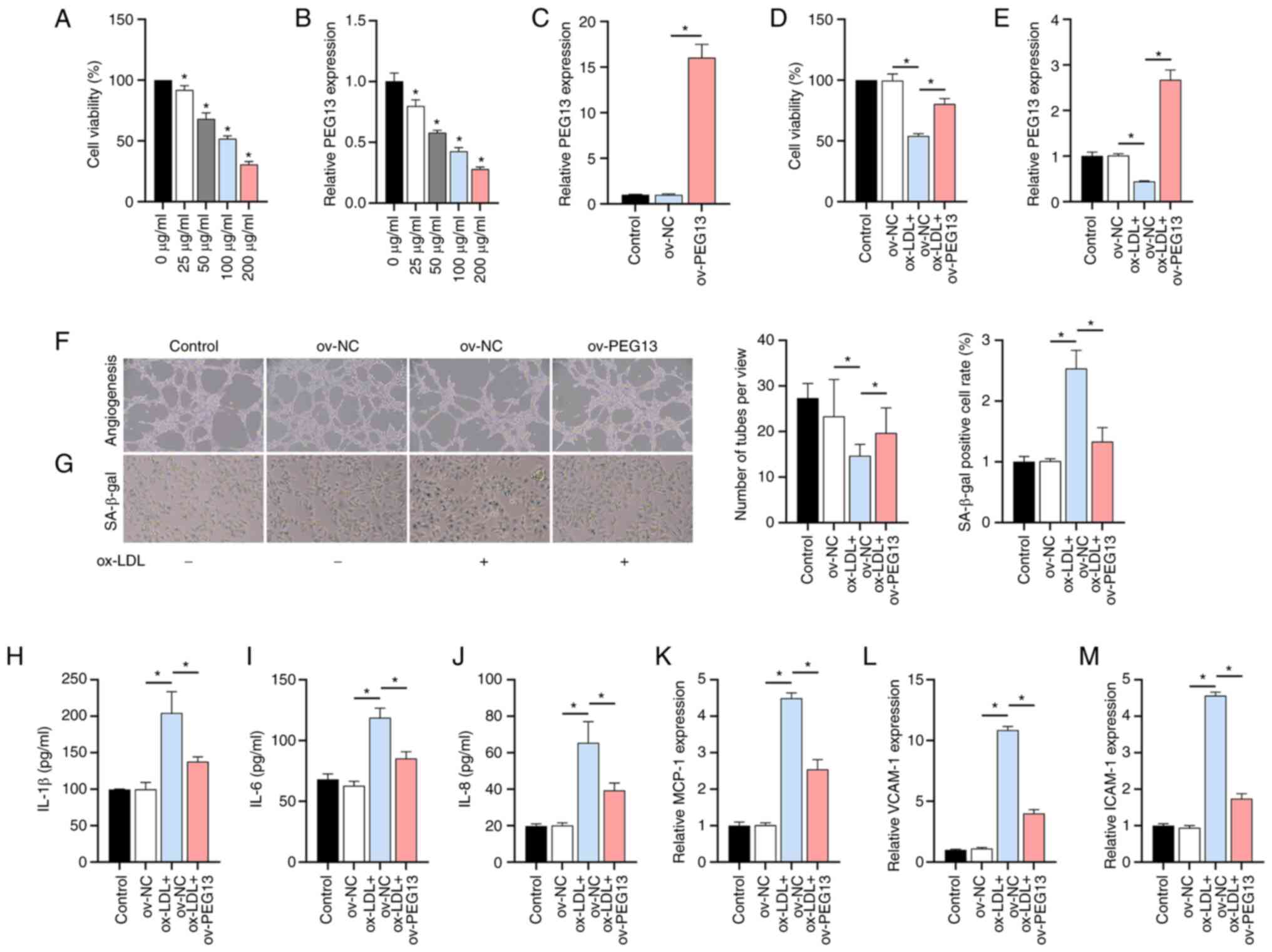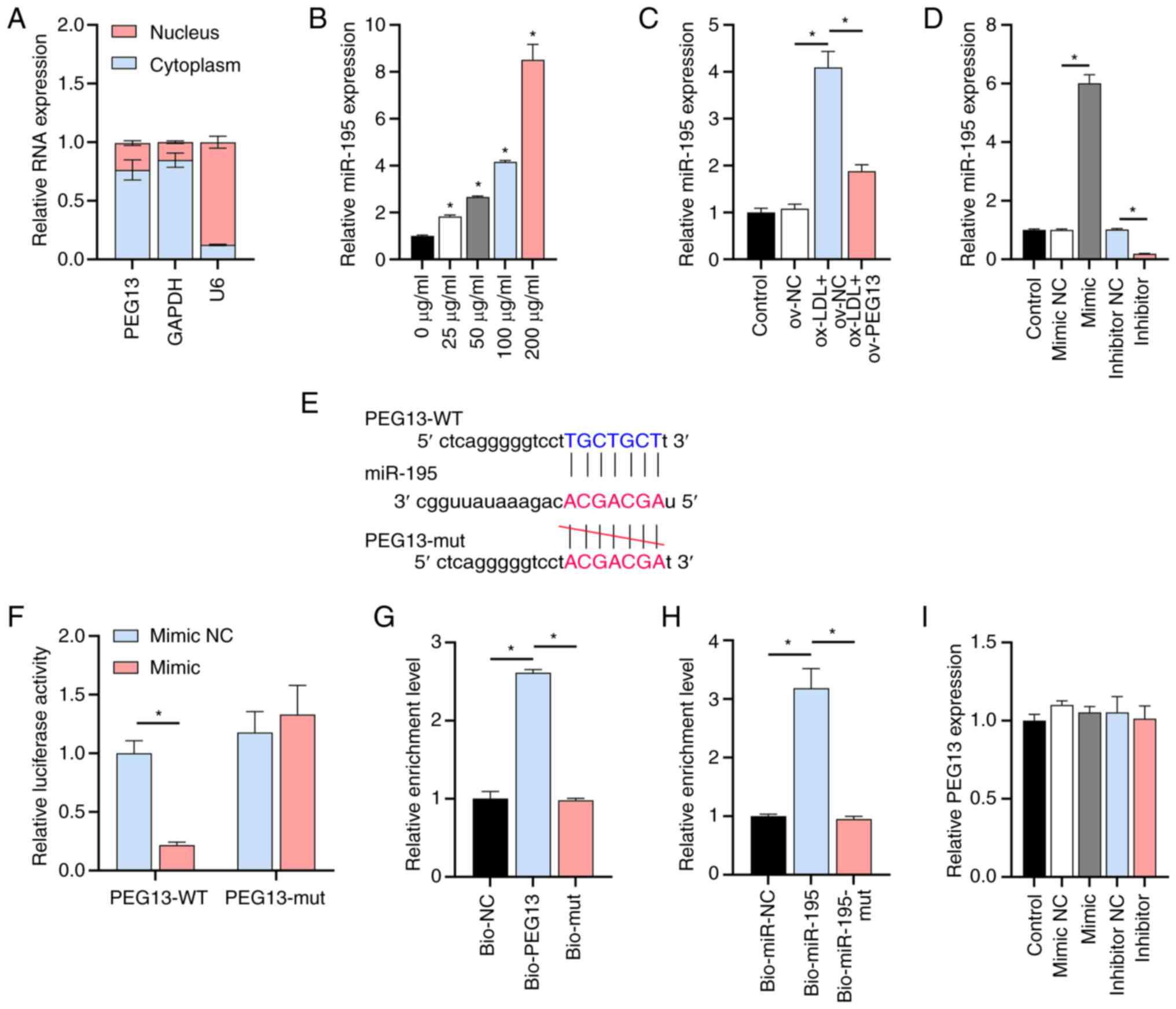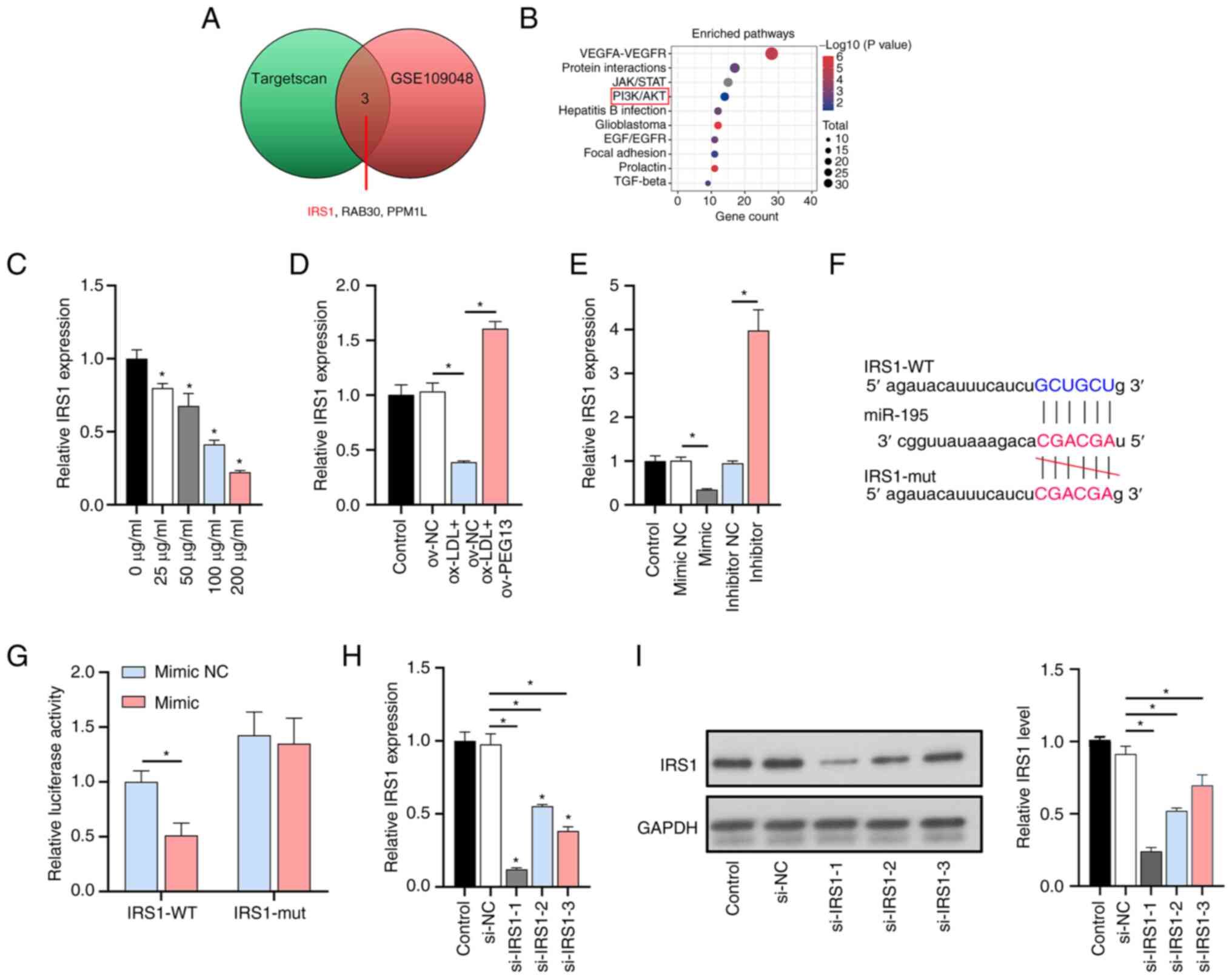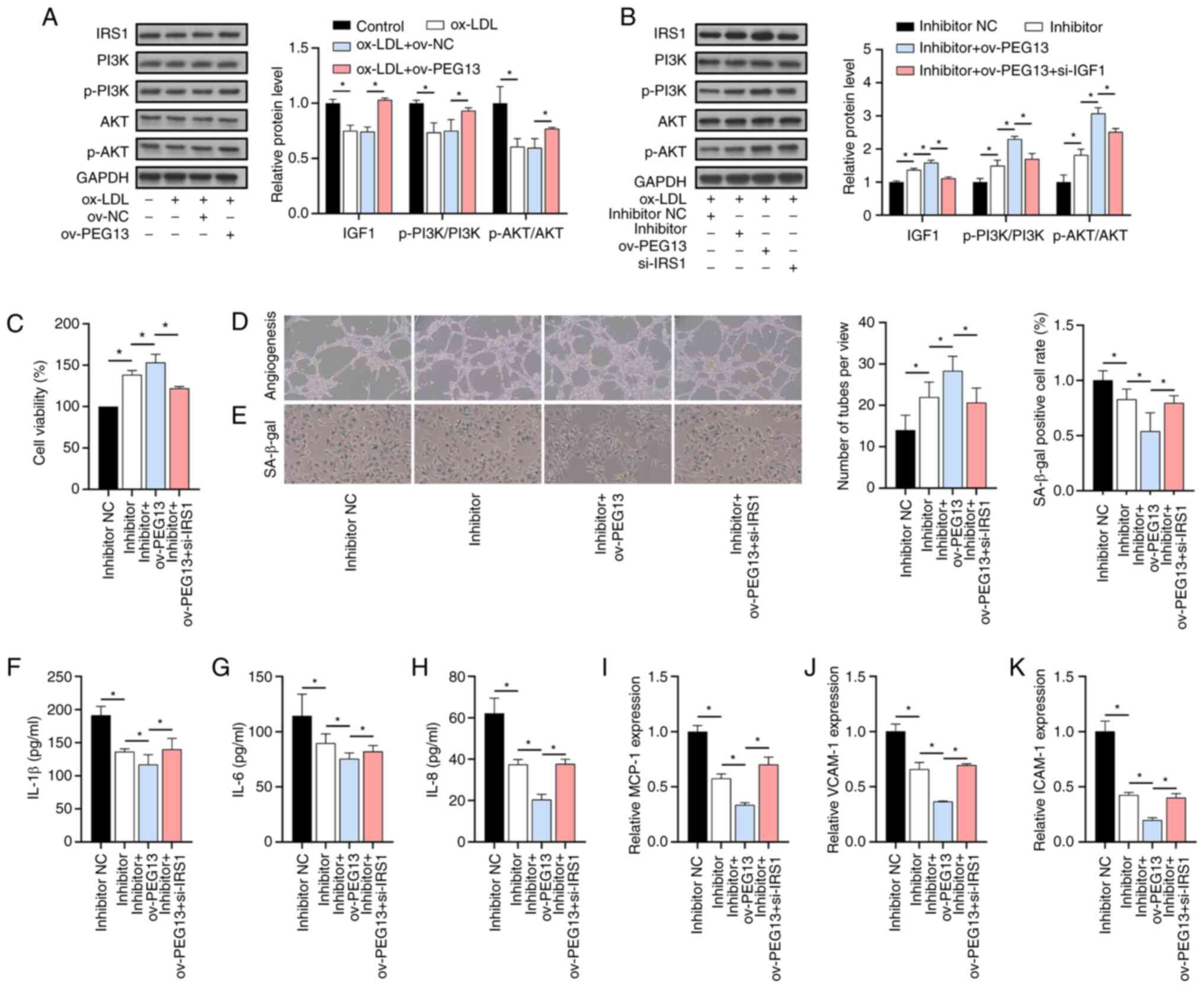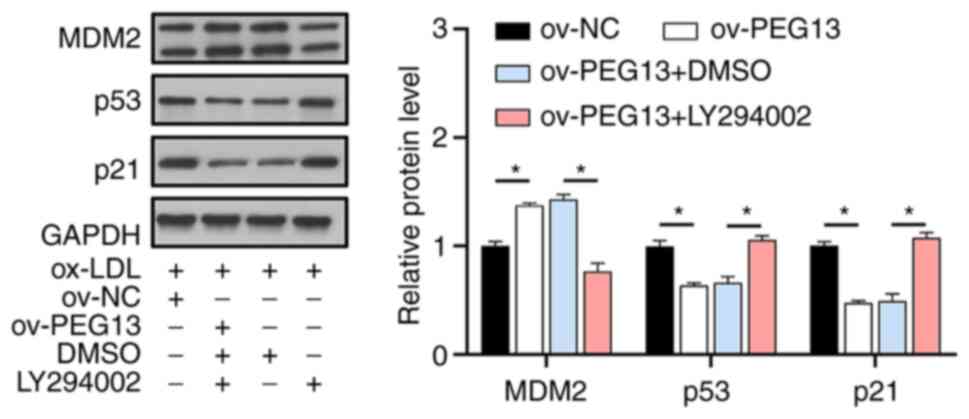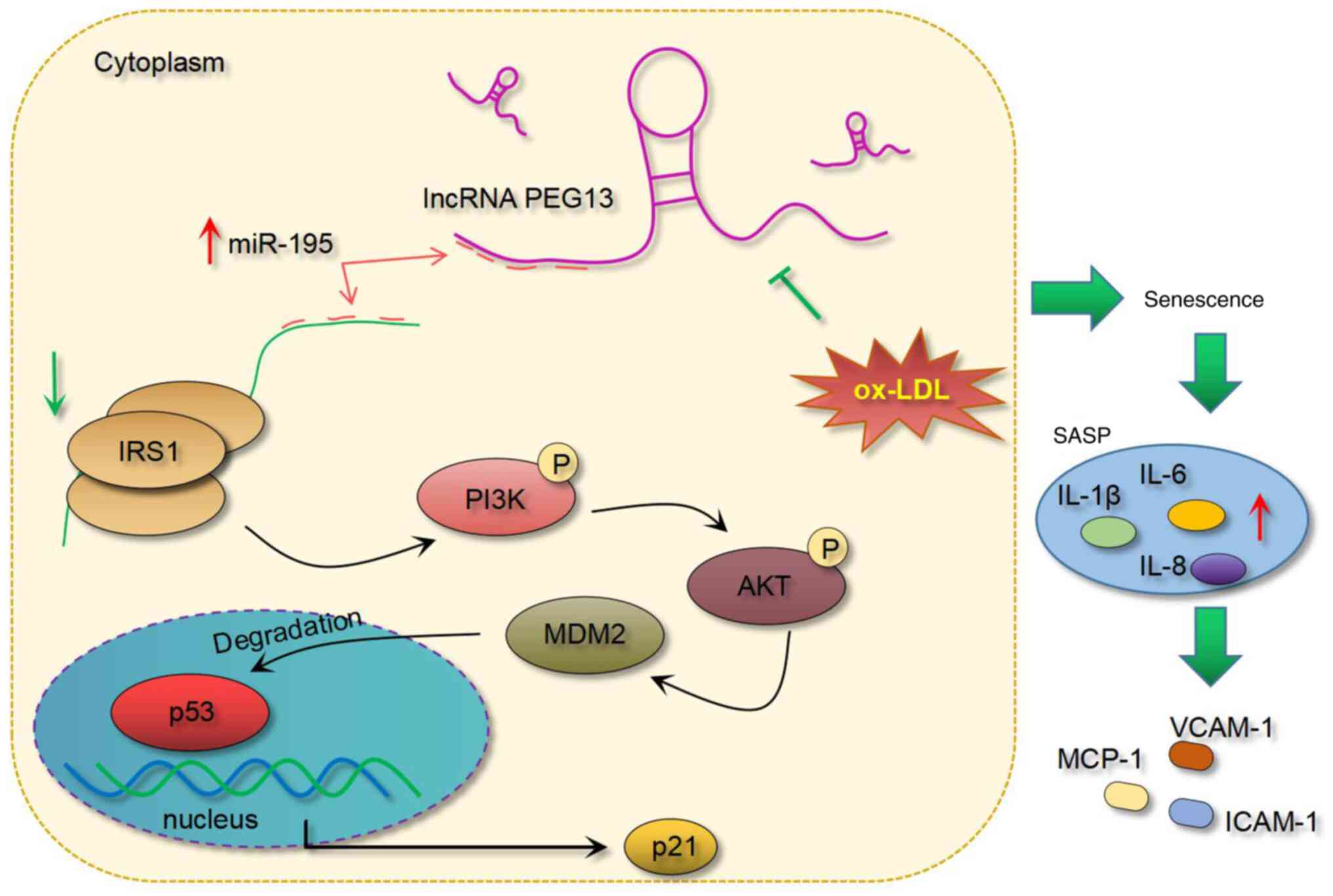|
1
|
Kong P, Cui ZY, Huang XF, Zhang DD, Guo RJ
and Han M: Inflammation and atherosclerosis: Signaling pathways and
therapeutic intervention. Signal Transduct Target Ther.
7(131)2022.PubMed/NCBI View Article : Google Scholar
|
|
2
|
Khatana C, Saini NK, Chakrabarti S, Saini
V, Sharma A, Saini RV and Saini AK: Mechanistic insights into the
oxidized low-density lipoprotein-induced atherosclerosis. Oxid Med
Cell Longev. 2020(5245308)2020.PubMed/NCBI View Article : Google Scholar
|
|
3
|
Xiang Q, Tian F, Xu J, Du X, Zhang S and
Liu L: New insight into dyslipidemia-induced cellular senescence in
atherosclerosis. Biol Rev Camb Philos Soc. 97:1844–1867.
2022.PubMed/NCBI View Article : Google Scholar
|
|
4
|
Vellasamy DM, Lee SJ, Goh KW, Goh BH, Tang
YQ, Ming LC and Yap WH: Targeting immune senescence in
atherosclerosis. Int J Mol Sci. 23(13059)2022.PubMed/NCBI View Article : Google Scholar
|
|
5
|
Honda S, Ikeda K, Urata R, Yamazaki E,
Emoto N and Matoba S: Cellular senescence promotes endothelial
activation through epigenetic alteration, and consequently
accelerates atherosclerosis. Sci Rep. 11(14608)2021.PubMed/NCBI View Article : Google Scholar
|
|
6
|
Wu CM, Zheng L, Wang Q and Hu YW: The
emerging role of cell senescence in atherosclerosis. Clin Chem Lab
Med. 59:27–38. 2020.PubMed/NCBI View Article : Google Scholar
|
|
7
|
Xu D, Dai R, Chi H, Ge W and Rong J: Long
non-coding RNA MEG8 suppresses hypoxia-induced excessive
proliferation, migration and inflammation of vascular smooth muscle
cells by regulation of the miR-195-5p/RECK axis. Front Mol Biosci.
8(697273)2021.PubMed/NCBI View Article : Google Scholar
|
|
8
|
Wang Q, Deng F, Li J, Guo L and Li K: The
long non-coding RNA SNHG1 attenuates chondrocyte apoptosis and
inflammation via the miR-195/IKK-α axis. Cell Tissue Bank.
24:167–180. 2023.PubMed/NCBI View Article : Google Scholar
|
|
9
|
Jin J, Wang C, Ouyang Y and Zhang D:
Elevated miR-195-5p expression in deep vein thrombosis and
mechanism of action in the regulation of vascular endothelial cell
physiology. Exp Ther Med. 18:4617–4624. 2019.PubMed/NCBI View Article : Google Scholar
|
|
10
|
Wang Y, Zhang CX, Ge SL and Gong WH:
CTBP1-AS2 inhibits proliferation and induces autophagy in
ox-LDL-stimulated vascular smooth muscle cells by regulating
miR-195-5p/ATG14. Int J Mol Med. 46:839–848. 2020.PubMed/NCBI View Article : Google Scholar
|
|
11
|
Gao H, Zhang Y, Xue H, Zhang Q, Zhang Y,
Shen Y and Bing X: Long non-coding RNA Peg13 alleviates
hypoxic-ischemic brain damage in neonatal mice via miR-20a-5p/XIAP
axis. Neurochem Res. 47:656–666. 2022.PubMed/NCBI View Article : Google Scholar
|
|
12
|
Jiang Y, Wang Y, Sun Y and Jiang H: Long
non-coding RNA Peg13 attenuates the sevoflurane toxicity against
neural stem cells by sponging microRNA-128-3p to preserve Sox13
expression. PLoS One. 15(e0243644)2020.PubMed/NCBI View Article : Google Scholar
|
|
13
|
Wang N, Zhang X, Ma Z, Niu J, Ma S, Wenjie
W and Chen J: Combination of tanshinone IIA and astragaloside IV
attenuate atherosclerotic plaque vulnerability in ApoE(-/-) mice by
activating PI3K/AKT signaling and suppressing TRL4/NF-κB signaling.
Biomed Pharmacother. 123(109729)2020.PubMed/NCBI View Article : Google Scholar
|
|
14
|
Duan MX, Zhou H, Wu QQ, Liu C, Xiao Y,
Deng W and Tang QZ: Andrographolide protects against HG-induced
inflammation, apoptosis, migration, and impairment of angiogenesis
via PI3K/AKT-eNOS signalling in HUVECs. Mediators Inflamm.
2019(6168340)2019.PubMed/NCBI View Article : Google Scholar
|
|
15
|
Cheng HW, Chen YF, Wong JM, Weng CW, Chen
HY, Yu SL, Chen HW, Yuan A and Chen JJ: Cancer cells increase
endothelial cell tube formation and survival by activating the
PI3K/Akt signalling pathway. J Exp Clin Cancer Res.
36(27)2017.PubMed/NCBI View Article : Google Scholar
|
|
16
|
Chibaya L, Karim B, Zhang H and Jones SN:
Mdm2 phosphorylation by Akt regulates the p53 response to oxidative
stress to promote cell proliferation and tumorigenesis. Proc Natl
Acad Sci USA. 118(e2003193118)2021.PubMed/NCBI View Article : Google Scholar
|
|
17
|
Wu D and Prives C: Relevance of the
p53-MDM2 axis to aging. Cell Death Differ. 25:169–179.
2018.PubMed/NCBI View Article : Google Scholar
|
|
18
|
Sha JY, Li JH, Zhou YD, Yang JY, Liu W,
Jiang S, Wang YP, Zhang R, Di P and Li W: The p53/p21/p16 and
PI3K/Akt signaling pathways are involved in the ameliorative
effects of maltol on D-galactose-induced liver and kidney aging and
injury. Phytother Res. 35:4411–4424. 2021.PubMed/NCBI View Article : Google Scholar
|
|
19
|
Cao YL, Liu DJ and Zhang HG: MiR-7
regulates the PI3K/AKT/VEGF pathway of retinal capillary
endothelial cell and retinal pericytes in diabetic rat model
through IRS-1 and inhibits cell proliferation. Eur Rev Med
Pharmacol Sci. 22:4427–4430. 2018.PubMed/NCBI View Article : Google Scholar
|
|
20
|
Li CY, Wang LX, Dong SS, Hong Y, Zhou XH,
Zheng WW and Zheng C: Phlorizin exerts direct protective effects on
palmitic acid (PA)-induced endothelial dysfunction by activating
the PI3K/AKT/eNOS signaling pathway and increasing the levels of
nitric oxide (NO). Med Sci Monit Basic Res. 24:1–9. 2018.PubMed/NCBI View Article : Google Scholar
|
|
21
|
Wang Y, Zhang X, Zou C, Kung HF, Lin MC,
Dress A, Wardle F, Jiang BH and Lai L: miR-195 inhibits tumor
growth and angiogenesis through modulating IRS1 in breast cancer.
Biomed Pharmacother. 80:95–101. 2016.PubMed/NCBI View Article : Google Scholar
|
|
22
|
Miao M, Cao S, Tian Y, Liu D, Chen L, Chai
Q, Wei M, Sun S, Wang L, Xin S, et al: Potential diagnostic
biomarkers: 6 Cuproptosis- and ferroptosis-related genes linking
immune infiltration in acute myocardial infarction. Genes Immun.
24:159–170. 2023.PubMed/NCBI View Article : Google Scholar
|
|
23
|
Livak KJ and Schmittgen TD: Analysis of
relative gene expression data using real-time quantitative PCR and
the 2(-Delta Delta C(T)) method. Methods. 25:402–408.
2001.PubMed/NCBI View Article : Google Scholar
|
|
24
|
Teng P, Liu Y, Zhang M and Ji W:
Diagnostic and prognostic significance of serum miR-18a-5p in
patients with atherosclerosis. Clin Appl Thromb Hemost.
27(10760296211050642)2021.PubMed/NCBI View Article : Google Scholar
|
|
25
|
Cui F and He X: IGF-1 ameliorates
streptozotocin-induced pancreatic β cell dysfunction and apoptosis
via activating IRS1/PI3K/Akt/FOXO1 pathway. Inflamm Res.
71:669–680. 2022.PubMed/NCBI View Article : Google Scholar
|
|
26
|
Falk E: Pathogenesis of atherosclerosis. J
Am Coll Cardiol. 47 (8 Suppl):C7–C12. 2006.PubMed/NCBI View Article : Google Scholar
|
|
27
|
Herrington W, Lacey B, Sherliker P,
Armitage J and Lewington S: Epidemiology of atherosclerosis and the
potential to reduce the global burden of atherothrombotic disease.
Circ Res. 118:535–546. 2016.PubMed/NCBI View Article : Google Scholar
|
|
28
|
Simion V, Zhou H, Haemmig S, Pierce JB,
Mendes S, Tesmenitsky Y, Pérez-Cremades D, Lee JF, Chen AF, Ronda
N, et al: A macrophage-specific lncRNA regulates apoptosis and
atherosclerosis by tethering HuR in the nucleus. Nat Commun.
11(6135)2020.PubMed/NCBI View Article : Google Scholar
|
|
29
|
Jiang YH, Jiang LY, Wang YC, Ma DF and Li
X: Quercetin attenuates atherosclerosis via modulating oxidized
LDL-induced endothelial cellular senescence. Front Pharmacol.
11(512)2020.PubMed/NCBI View Article : Google Scholar
|
|
30
|
Cao H, Jia Q, Yan L, Chen C, Xing S and
Shen D: Quercetin suppresses the progression of atherosclerosis by
regulating MST1-mediated autophagy in ox-LDL-induced RAW264.7
macrophage foam cells. Int J Mol Sci. 20(6093)2019.PubMed/NCBI View Article : Google Scholar
|
|
31
|
Zhang Q, Liu J, Duan H, Li R, Peng W and
Wu C: Activation of Nrf2/HO-1 signaling: An important molecular
mechanism of herbal medicine in the treatment of atherosclerosis
via the protection of vascular endothelial cells from oxidative
stress. J Adv Res. 34:43–63. 2021.PubMed/NCBI View Article : Google Scholar
|
|
32
|
Malekmohammad K, Sewell RDE and
Rafieian-Kopaei M: Antioxidants and atherosclerosis: Mechanistic
aspects. Biomolecules. 9(301)2019.PubMed/NCBI View Article : Google Scholar
|
|
33
|
Liu Y, Liu N and Liu Q: Constructing a
ceRNA-immunoregulatory network associated with the development and
prognosis of human atherosclerosis through weighted gene
co-expression network analysis. Aging (Albany NY). 13:3080–3100.
2021.PubMed/NCBI View Article : Google Scholar
|
|
34
|
Kim W, Noh H, Lee Y, Jeon J,
Shanmugavadivu A, McPhie DL, Kim KS, Cohen BM, Seo H and Sonntag
KC: MiR-126 regulates growth factor activities and vulnerability to
toxic insult in neurons. Mol Neurobiol. 53:95–108. 2016.PubMed/NCBI View Article : Google Scholar
|
|
35
|
Perluigi M, Pupo G, Tramutola A, Cini C,
Coccia R, Barone E, Head E, Butterfield DA and Di Domenico F:
Neuropathological role of PI3K/Akt/mTOR axis in down syndrome
brain. Biochim Biophys Acta. 1842:1144–1153. 2014.PubMed/NCBI View Article : Google Scholar
|
|
36
|
Huang L, Ye Q, Lan C, Wang X and Zhu Y:
AZD6738 Inhibits fibrotic response of conjunctival fibroblasts by
regulating checkpoint kinase 1/P53 and PI3K/AKT pathways. Front
Pharmacol. 13(990401)2022.PubMed/NCBI View Article : Google Scholar
|
|
37
|
Safi A, Heidarian E and Ahmadi R:
Quercetin synergistically enhances the anticancer efficacy of
docetaxel through induction of apoptosis and modulation of
PI3K/AKT, MAPK/ERK, and JAK/STAT3 signaling pathways in MDA-MB-231
breast cancer cell line. Int J Mol Cell Med. 10:11–22.
2021.PubMed/NCBI View Article : Google Scholar
|
|
38
|
Lyu TJ, Zhang ZX, Chen J and Liu ZJ:
Ginsenoside Rg1 ameliorates apoptosis, senescence and oxidative
stress in ox-LDL-induced vascular endothelial cells via the
AMPK/SIRT3/p53 signaling pathway. Exp Ther Med.
24(545)2022.PubMed/NCBI View Article : Google Scholar
|
|
39
|
Liu Y, Jia L, Min D, Xu Y, Zhu J and Sun
Z: Baicalin inhibits proliferation and promotes apoptosis of
vascular smooth muscle cells by regulating the MEG3/p53 pathway
following treatment with ox-LDL. Int J Mol Med. 43:901–913.
2019.PubMed/NCBI View Article : Google Scholar
|















